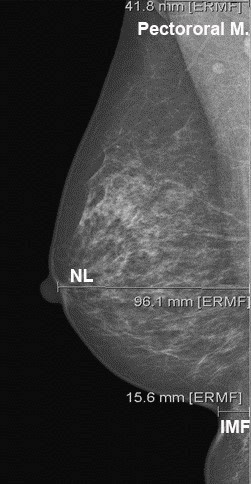Mediolateral oblique projection in mammography: use of different angulation for patients with different thorax anatomies
DOI:
https://doi.org/10.17532/jhsci.2019.854Keywords:
breast, digital mammography, mammography, patient positioning, MLOAbstract
Introduction: The literature describes that MLO projection is not done only with angulation of 45° but there is a wider span of angles that can be used. Therefore, we have investigated if the use of alternative angulation in mammographic imaging in relation to specific patient anatomies shows more breast tissue.
Methods: MLO mammograms form 491 patients that had a mammography imaging performed at alternative and basic angulation were included in the study. Angulation of 55° was performed when patient had small breasts and convex sternum. The angle of 35° was used for patients with large breasts and concave sternum as well as for patients with shorter thoraxes. Measurements assessed the width of the pectoral muscle, the retromammary part, and the inframammary part of the breast for both projections (alternative and basic).
Results: When comparing the angulations of 45° and 55°, all three measured widths were in favor of 55°: the pectoral muscle was on average wider by 4%, the basal part by 1.3%, and the inframammary part by 29%. When comparing angulations of 35° and 45°, at the angulation of 35°, the basal part was wider by 3.3% and inframammary part by 32.4%. There were no differences in the width of the pectoral muscle between mentioned angulations.
Conclusion: Based on our results, we recommend the use of a 55° angle as more appropriate for patients with longer thoraxes and small breasts and the use of a 35° angle for those with shorter thoraxes and large breasts.
Downloads











